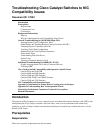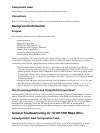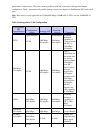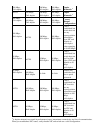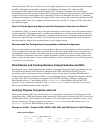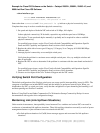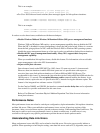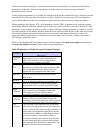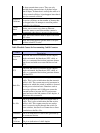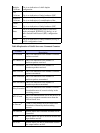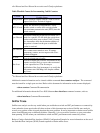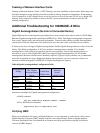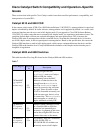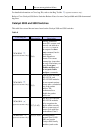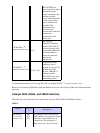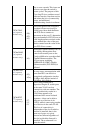This is an example:
%PAGP−5−PORTFROMSTP:Port 3/3 left bridge port 3/3
%PAGP−5−PORTTOSTP:Port 3/3 joined bridge port 3/3
For Cisco IOS Software−based switches, these messages appear for link up/down situations:
%LINK−3−UPDOWN: Interface interface, changed state to up
%LINK−3−UPDOWN: Interface interface, changed state to down
This is an example:
%LINK−3−UPDOWN: Interface FastEthernet0/1, changed state to up
%LINK−3−UPDOWN: Interface FastEthernet0/1, changed state to down
•
In order to resolve these issues, troubleshoot with these techniques:
Disable Windows 2000 and Windows Millennium Edition (ME) power management functions.
Windows 2000 and Windows ME employ a power management capability that can disable the NIC.
When the NIC is disabled for power management, it drops the link to the switch. If there is a concern
about the link going up/down on NICs with the Windows 2000 or Windows ME operating systems,
disable the power management feature as a first step in order to troubleshoot link up/down situations.
•
Disable the NIC power management functionality. Many NICs support their own power
management capability.
When you troubleshoot link up/down issues, disable this feature. For information on how to disable
power management, refer to the NIC documentation.
•
Adjust switch jitter tolerance.
Jitter tolerance, based on the IEEE 802.33u−1995, clause 25, must not exceed 1.4 nanoseconds.
However, there are situations in which NICs that operat out−of−specification with respect to
excessive jitter cause link up/down situations on Catalyst 6000 and 6500 10/100 ports. The
workaround for this issue is to increase the jitter tolerance on the Catalyst 6000 and 6500 switches for
10/100 ports to 3.1 seconds. The set option debounce enable command enables the feature. As an
ultimate solution, replace the out−of−specification NICs, instead of using the debounce option. This
feature is first integrated into software version 5.3(5)CSX.
For the Catalyst 2900XL and 3500XL, the interface command carrier−delay time can be adjusted to
four seconds as a possible workaround for this same issue.
Refer to Fast Ethernet Consortium Physical Medium Dependent Test Suite for more information
about jitter tolerance.
•
Performance Notes
Most performance issues are related to switch port configuration, duplex mismatches, link up/down situations,
and data link errors. When you troubleshoot performance issues, review all previous sections of this
document. After you review these sections, proceed to the next section, Understanding Data Link Errors. The
final step in order to resolve any performance issue is to obtain a sniffer trace. A sniffer trace is very
conclusive with regard to any specific performance problem because it details packet transfer.
Understanding Data Link Errors
Many performance issues with NICs can be related to data link errors. Excessive errors usually indicate a
problem. When operating at a half−duplex setting, some data link errors such as FCS, alignment, runts, and



